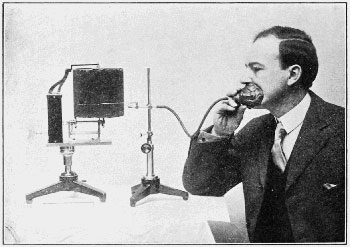
Big data and the music industry: Where’s the romance?
The O'Reilly Radar Podcast: Amanda Palmer on music industry survival techniques.
Subscribe to the O’Reilly Radar Podcast to track the technologies and people that will shape our world in the years to come.
In this week’s Radar Podcast episode, author and entrepreneur Alistair Croll talks with musician and performer Amanda Palmer about the current state of the music industry and how she’s navigating her way through new platforms, crowdfunding, and an ever-increasing amount of data.
Here are a few snippets from their chat:
I’ve always approached every Internet platform and every Internet tool with the suspicion that it may not last, and that actually what’s very important is that the art and the relationships I’m building are authentic enough that even if the Internet disappeared tomorrow, or even if Facebook collapsed, or Twitter collapsed, or what have you, or all of our email went down, I’m not so reliant on the Internet itself that I couldn’t somehow piece things together.
I kind of had to come to terms with the fact that the machine still feeds what people listen to, whether it’s radio, or what gets licensed to films, or what music is playing when you walk into a shop. The ability of an artist to actually really get over that mountain, if you decide not to play the game, your hands are still pretty tied.
[Zoe Keating] was saying that an album for her is, she wants to make it all at one time and make one big statement and put it out, kind of like you would put out an opera. I’m deliberately trying to detach myself from that, and just say, ‘I wrote a song. I have this Patreon. I’m just going to put it out.’ At some point, maybe I will collect everything together so the mainstream media people of the world can have an Amanda Palmer record. But maybe that format really is dying. Read more…

Talking to the IoT
When our stuff speaks to us, we exchange more than ideas.
 People are really good at talking to each other. That shouldn’t be too surprising. Conversation among human beings has evolved over a very long period of time — and now we’re starting to talk to our stuff, and in some cases, it’s talking back.
People are really good at talking to each other. That shouldn’t be too surprising. Conversation among human beings has evolved over a very long period of time — and now we’re starting to talk to our stuff, and in some cases, it’s talking back.
Asking Siri (or Cortana or Google Now) some simple questions is just the beginning of what’s coming. In fact, we’re in the midst of a significant shift in voice and conversation technology. Companies like Amazon, Facebook, and Google are falling over each other to hire researchers and acquire related companies, and they are starting to use this talent in new and interesting ways.
This is the first post in a series of articles I’ll use to explore speech and conversational interfaces. The subject will be dialog systems in general, with a focus on the intelligent interfaces we can expect to see more of in the future. Other topics could include:
- Design considerations for spoken language systems
- Emerging research in the area
- Changes to how we interact with technology plus the social impact they might have
If you’re someone with a finely tuned hype radar, some skepticism about just how good these technologies might be is understandable. Most of the speech-to-text and automated telephone interactions available up to this point have been frustrating to use. People regularly share tips for short-circuiting interactive voice response (IVR) trees (I hear swearing helps!). And even Siri can seem clueless a lot of the time. Read more…

Amazon, boredom, and culture
Corporate leadership is as much about building people as it is about developing product.
Attend Cultivate, September 28 to 29 in New York, NY. Cultivate is our conference looking at the challenges facing modern management and aiming to train a new generation of business leaders who understand the relationship between corporate culture and corporate prosperity.
I want to call attention to two articles I’ve read recently. First, Rita King’s analysis of Amazon’s corporate culture, Culture Controversy at Amazon, Decoded, is an excellent, even-handed discussion of one of the past year’s most controversial articles about corporate culture. I hadn’t intended to write about Amazon, but King’s article needs to be read.
King doesn’t present a simple “bad Amazon” story. Anyone in the industry knows that Amazon is a tough place to work. King presents both sides of this picture: working at Amazon is difficult and demanding, but you may find yourself pushed to levels of creativity you never thought possible. Amazon’s culture encourages a lot of critical thinking, questioning, and criticism, sometimes to the point of “brutality.” This pressure can lead to backstabbing and intense rivalries, and I’m disturbed by Amazon’s myth that they are a “meritocracy,” since meritocracies rarely have much to do with merit. But the result of constant pressure to perform at the highest level is that Amazon can move quickly, react to changes, and create new products faster than its competitors — often before their competitors even realize there’s an opportunity for a new product.
Without pressure to achieve, and without critical thinking, it’s easy to build a culture of underachievers, a culture of complacency. A culture of complacency is more comfortable, but in the long run, just as ugly. DEC, Wang, and a host of other high-tech companies from the 70s and 80s never understood how the industry was changing until it was too late. HP is arguably in a similar position now. I can’t see Amazon making the same mistake. When you’re making the changes, you’re less likely to be done in by them. Read more…

Reconciling design thinking with the craft of design doing
The O'Reilly Radar Podcast: Suzanne Pellican on the ups and downs of Intuit's journey to become a design-driven organization.
Subscribe to the O’Reilly Radar Podcast to track the technologies and people that will shape our world in the years to come.
In this week’s episode, O’Reilly’s Mary Treseler chats with Suzanne Pellican, VP and executive creative director at Intuit, about three core principles of design thinking and about Intuit’s journey to become a design-driven organization.
Pellican also will be speaking at our upcoming O’Reilly Design Conference about creating a culture based on design thinking, experimentation, and risk taking. You can find out more at the event website.
Here are a few highlights from their chat:
Design thinking is the practice of problem solving, and to me, that is based on those three core principles that I spoke about: deep customer empathy, going broad to go narrow, and rapidly experimenting with your customer. That’s the actual skill set and the tools and the mindset that you have.
Design thinking is absolutely experiential, and I think the first mistake that we made when we started rolling this out eight years ago was, if you’re going to change the way people work day to day, that’s going to take a long time. You can’t just ask people to do it and expect them to change. You have to give them ample opportunities to practice so that they can then understand it and make it their own.

Managing complexity in distributed systems
The O'Reilly Radar Podcast: Astrid Atkinson on optimization, and Kelsey Hightower on distributed computing.
Subscribe to the O’Reilly Radar Podcast to track the technologies and people that will shape our world in the years to come.
In this week’s episode, O’Reilly’s Mac Slocum talks to Astrid Atkinson, director of software engineering at Google, about the delicate balance of managing complexity in distributed systems and her experience working on-call rotations at Google.
Here are a few snippets from their chat:
I think it’s often really hard for organizations that are scaling quickly to find time to manage complexity in their systems. That can be really a trap, because if you’re really always just focused on the next deadline or whatever, and never planning for what you’re going to live with when you’re done, then you might never find the time.
You can only optimize what you pay attention to, and so if you can’t see what your system is doing, if you can’t see whether it’s working, it’s not working.
I used to get paged awake at two in the morning. You go from zero to Google is down. That’s a lot to wake up to.




